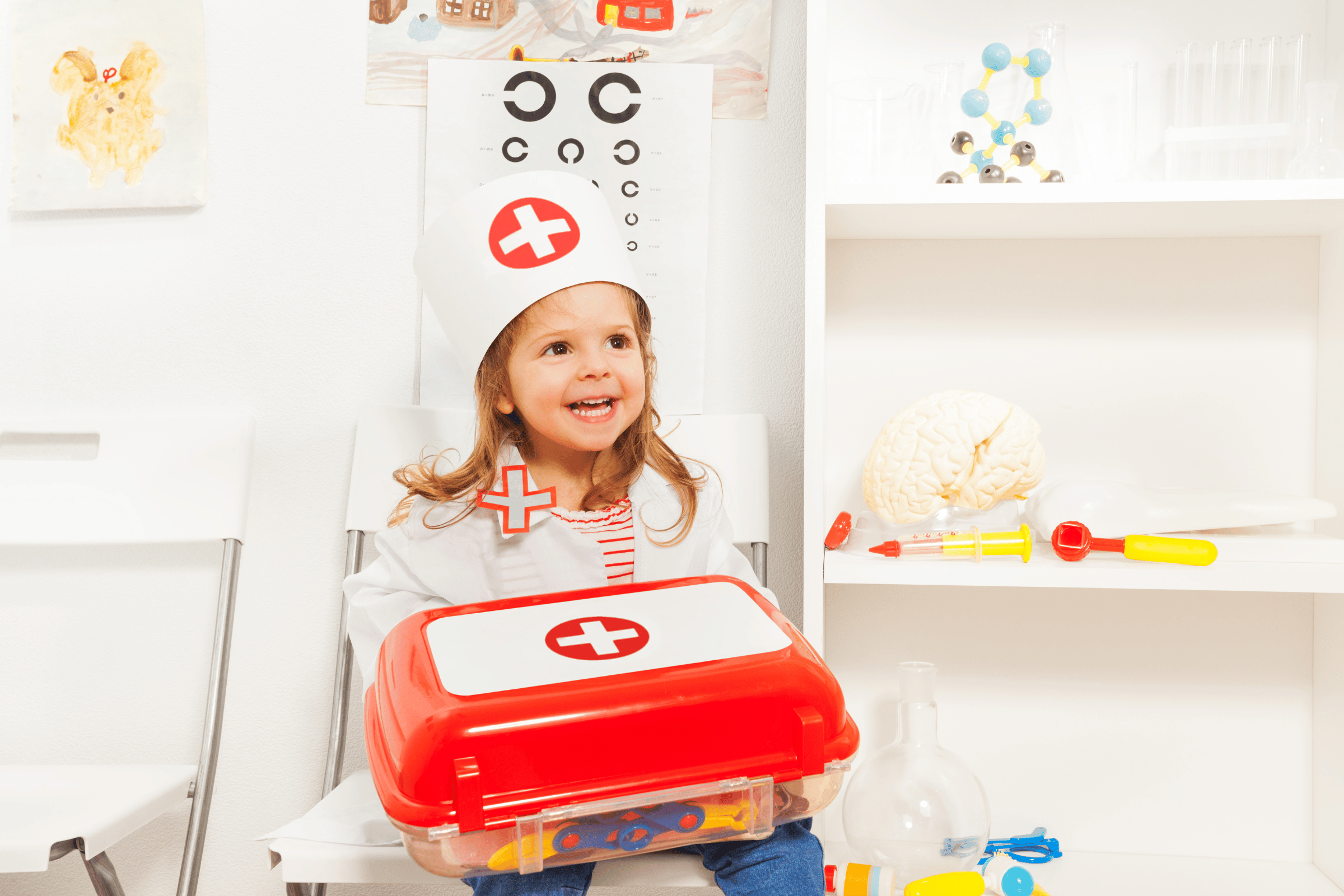
First aid: The 5 actions that save
1- Call emergency services
First aid actions are preventive and serve to prepare for the arrival of help. So whatever the incident, call emergency services immediately . Having the emergency number at hand is essential for a rapid response and in these cases, every minute is precious. So here's a little reminder:- 📌 On the 18th, the firefighters 🚒
- 📌 On the 15th, SAMU 🚑
- 📌 112, the emergency number throughout the European Union 🇪🇺
- 📌 114, for hearing impaired people (SMS) 🦻
2- The Heimlich maneuver against suffocation
The Heimlich maneuver is a first aid technique used to clear the airway of a person who is choking due to an object or food stuck in their throat. The technique varies slightly depending on the age of the child.For infants (0-12 months) :
How to recognize that an infant is choking?
If the infant is unable to cry, cough or breathe, or has an abnormal (bluish) skin color, he or she is in respiratory distress and you should act immediately.
How to act?
1 - Sit and place the infant face down on your forearm, the head is slightly lower than the rest of the body and is held by your hand with the thumb on one side of his jaw and two other fingers on the other side. Make sure it is held securely.
2 – Give up to 5 pats on the back , between the infant's shoulder blades using the palm of your hand. Use moderate force to avoid causing injury.
3 – Evaluate the situation :
- If after the 5 pats on the back, your baby has taken out the foreign body, you must immediately remove it from his mouth and hold him in your arms to reassure him. Then immediately seek medical advice: your doctor if you can contact him at this time, otherwise call the SAMU (15).
- If after the 5 pats on the back, the foreign body has still not come out, you must follow the next step.
4 - Change your baby's side and place him on his back, still with your forearm, leaning on your thigh. Press with two fingers, thumb and index finger, on your baby's sternum, that is to say in the middle of the chest, about 1 cm below an imaginary line joining the child's nipples .
⚠️ Be careful to press the sternum at chest level and not too low, otherwise you risk damaging your infant's still fragile organs.
5 - Perform up to 5 chest compressions : Press firmly but gently with your two fingers on the infant's chest.
6 - Alternate between back slaps and chest compressions : Continue to alternate between these two steps until the obstruction is cleared or medical help arrives.
For kids :
How to recognize that a child is choking?
If the child is unable to cough or breathe, or has an abnormal (bluish) skin color, he or she is in respiratory distress and you should act immediately.
How to act?
1 - Position yourself behind the child : Hold the child standing or sitting and position yourself behind him.
2 - Surround the child's abdomen with your arms : Place your closed fist, with your thumb inward, slightly above the child's navel.
3 - Apply brief, firm upward and inward pressure : Apply quick upward and inward pressure using a sharp motion. Repeat this action until the obstruction is cleared or medical help arrives.
3- Compression in case of bleeding
Take a clean cloth or sterile compresses and press on the wound with the palm of your hand to stop the bleeding until help arrives.
4- The 3 x 15 rule in the event of a superficial burn
In the event of a superficial burn, a simple rule to remember is the 3 x 15 rule:- Rinse the burn with water tempered to 15°C;
- Be sure to keep a distance of approximately 15 centimeters from the damaged tissue
- For a minimum time of 15 minutes.
It is then important to dry the skin well without rubbing and to protect it by covering it with a clean, dry cloth. Make sure the cloth does not stick to the skin. If there are blisters, it is recommended never to puncture them, but rather to protect them.
It is important to note that depending on the severity of the burn, it is advisable to consult a medical professional for further evaluation and appropriate care. In the event of a severe burn, call the emergency medical number immediately.
5- Where to train?
The Red Cross offers IPSEN training (Initiation to first aid for children and infants). It is a 4.5 hour training course, accessible to everyone aged 10 and over . This initiation raises participants' awareness of the prevention of domestic and everyday accidents and offers training in first aid procedures for children and infants. The cost of an IPSEN initiation varies from €25 to €30, this being subject to variation depending on the delegation's charges.
Sources:
YouTube , YouTube, Dec. 13, 2016, https://www.youtube.com/watch?v=w8IuGn-Cnh0. Accessed Oct 13, 2023.
“Ipsen Training - French Red Cross in Paris.” Croix , June 16, 2020, paris.croix-rouge.fr/formation/ipsen.
“Introduction to First Aid for Children and Infants.” Croix , www.croix-rouge.fr/formation/initiation-aux-premiers-secours-enfant-et-nourrisson. Accessed Oct 13, 2023.

